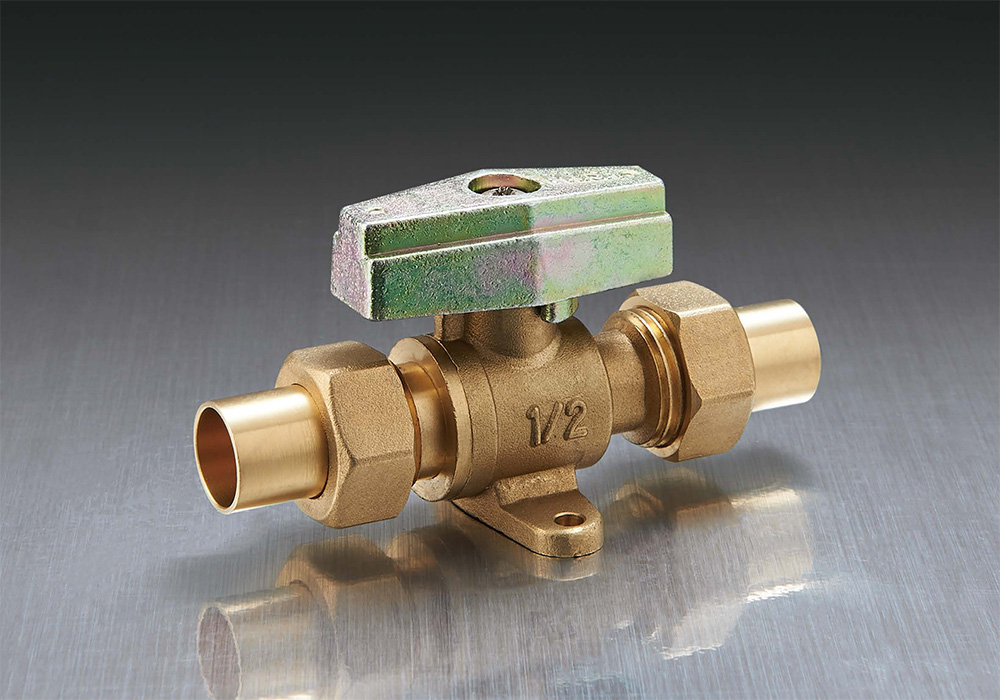2025-05-16
Brass gas valves manufacturer are critical components in the control and regulation of gas flow within various systems, from household appliances to industrial applications. These valves are designed to manage the flow of gases such as natural gas, propane, and butane, offering safety, durability, and efficient operation. The specifications and dimensions of brass gas valves are vital considerations when selecting the appropriate valve for a specific application.

Material Composition of Brass Gas Valves
The material used in manufacturing brass gas valves is one of the important factors that determine their durability and resistance to corrosion. Brass, an alloy of copper and zinc, is highly valued for its resistance to rust and corrosion, especially when exposed to moisture or harsh environments. The specific ratio of copper to zinc in brass can vary, influencing its mechanical properties.
Common grades of brass used in gas valve manufacturing include:
Leaded brass (with a small percentage of lead): Known for its machinability and durability.
Non-leaded brass: Often used in applications where lead-free products are required, such as potable water systems.
These materials ensure that brass gas valves can perform well under high pressure and temperature conditions while maintaining long-lasting functionality in both residential and industrial settings.
Pressure Rating
The pressure rating of a brass gas valve is one of the critical specifications that defines its performance and safety in gas systems. It indicates the pressure the valve can handle without failing or causing damage to the system. Gas systems often operate under various pressure levels, and selecting a valve with the correct pressure rating is essential to avoid leakage, ruptures, or malfunctioning.
Common pressure ratings for brass gas valves range from low to high-pressure applications:
Low pressure: Typically found in residential applications, where gas is supplied at low pressure.
Medium pressure: Used in commercial applications where the pressure is higher but not Unusual.
High pressure: Found in industrial applications, such as natural gas pipelines, where valves must withstand unusual pressure levels.
The appropriate pressure rating ensures that the valve can effectively regulate gas flow without compromising the system's integrity.
Valve Size and Dimensions
The dimensions of a brass gas valve are another crucial factor in determining its suitability for a particular application. The size of the valve is typically defined by its pipe thread size or its nominal bore diameter, which refers to the internal diameter through which gas flows. These dimensions ensure that the valve can handle the required gas flow without restrictions.
Common sizes for brass gas valves include:
1/8-inch to 2-inch sizes for residential and light commercial applications.
2-inch to 8-inch sizes for industrial and high-flow applications.
The valve size should match the gas pipe size and system requirements to maintain flow rates. Too large a valve may bring about inefficient flow control, while too small a valve can cause excessive pressure buildup or gas flow limitations.
Connection Type
Another important specification when considering brass gas valves is the connection type, which determines how the valve will be connected to the gas pipe or system. Various connection types are available depending on the application and regional standards. The common connection types for brass gas valves are:
Threaded connections: The common form, where the valve is screwed onto the pipe with internal or external threads. Threaded connections typically follow standards like NPT (National Pipe Thread) in North America or BSP (British Standard Pipe) in other parts of the world.
Compression fittings: These use a compression nut and ferrule to provide a secure connection without the need for threading.
Flanged connections: Used for larger valves in industrial settings, flanged connections involve bolted connections that create a leak-proof seal.
The selection of the correct connection type ensures a secure fit and minimizes the risk of gas leaks, which can pose serious safety hazards.